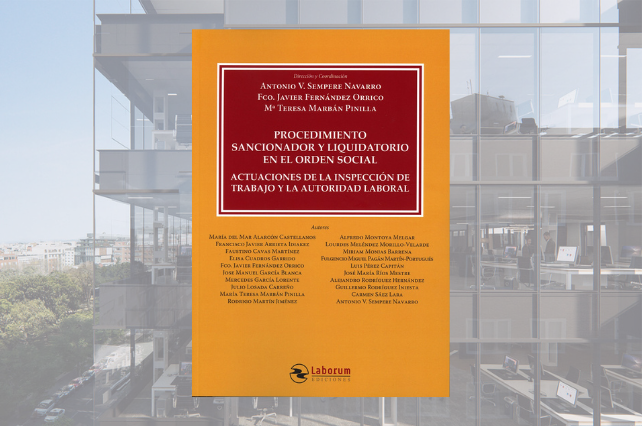Today, the EY-Sagardoy Talent and Innovation Institute presented the 9th edition of the Human Capital Outlook at the headquarters of the Confederation of Employers of Andalusia (CEA) in Seville. This quarterly report, developed in collaboration with FEDEA, analyzes the evolution of the labor market in the first quarter of 2024.
The presentation of the report was attended by Fátima Báñez, President of the EY-Sagardoy Talent and Innovation Institute; Íñigo Sagardoy, President of Sagardoy Abogados; Javier González de Lara, President of the CEA; Rocío Blanco, Minister of Employment, Business, and Self-Employment of the Junta de Andalucía; and Juan Pablo Riesgo, Secretary of the Advisory Board of the EY-Sagardoy Institute. Also participating in the event were Rafael Doménech, Head of Economic Analysis at BBVA Research; María Jesús López, Managing Partner of Sagardoy Abogados in Seville; and Francisco González-Quevedo, Partner at EY Abogados.
The EY-Sagardoy report highlights that, in the evolution of key aggregate indicators such as employment, unemployment, and economic activity, employment growth has slowed compared to the third quarter of 2023. The temporary employment rate remained stable throughout 2023, while permanent hiring continued to increase in 2023, albeit with a significant reduction in the conversion of temporary contracts to permanent ones.
The President of the Confederation of Employers of Andalusia (CEA) praised the report’s importance, calling it a “rigorous analytical tool with the trusted seal of EY-Sagardoy Talent and Innovation.” Javier González de Lara emphasized, “It is necessary to underline the value of Social Dialogue in shaping any employment policy. The current Labor Reform was born precisely from that willingness to reach consensus and from an atmosphere of institutional loyalty.” According to the president of Andalusian employers, some of the main challenges facing the labor market include job vacancies, the current difficulties of SMEs in finding professionals, and youth unemployment.
During the report’s presentation, Fátima Báñez, President of the EY-Sagardoy Talent and Innovation Institute, noted that “people are the strategic element for the growth and leadership of Andalusia. Thanks to the EY-Sagardoy Institute and all collaborators, this report provides technical rigor, information, best practices, and business policies that favor opportunities and people, resulting in well-being for society.”
Rocío Blanco, Minister of Employment, Business, and Self-Employment, advocated for “continuing to work hand in hand with the productive sector to design the training that is truly needed,” thus contributing to combating the phenomenon of labor slack, which in Spain reaches the highest rates in the EU “and prevents the labor supply and demand from aligning.” In her speech at the presentation of the latest ‘Human Capital Outlook Quarterly Report’, which she deemed “fundamental for understanding the trends of the present and future of the labor market,” Blanco reminded that her department has been working since 2019 with the main economic and social agents to define a broad catalog of training actions aimed at equipping future workers and filling the professional profiles demanded by companies. She also highlighted that the Ministry is implementing several lines of action to support businesses, including a significant line of incentives for permanent hiring, which will mobilize €145 million, primarily targeting young people and vulnerable groups.
For Íñigo Sagardoy, Vice President of the EY-Sagardoy Institute and President of Sagardoy Abogados, “This scenario raises reflections on the future direction of the labor market and the need to adapt to significant changes. The possibility of reducing the working day is also on the table, which underscores the importance of finding a balance between productivity and workers’ well-being. In the face of these challenges, it is essential to adopt innovative approaches that promote job stability and foster a more collaborative and sustainable work environment.”
Main Conclusions of the 9th Human Capital Outlook
In this 9th edition, the report identifies that employment creation continued to rise, albeit at a slower pace than in previous quarters. In fact, it was lower than the growth registered in the third quarter of 2023. Only the increase in Social Security enrollments gained traction, which continued into the beginning of 2024.
On the other hand, the increase in employment during the fourth quarter of 2023 was due to the growth of self-employed workers and the rise in public sector employees, with a 1.7% quarterly increase (CVEC). In contrast, the level of salaried private sector employment barely changed.
Regarding total working hours, these increased due to employment growth and the stability of hours worked per employee. Both employment and hours worked remained above pre-pandemic levels, while hours worked per employee remained below pre-pandemic levels.
Concerning the potential reduction in the working day, the report details that, according to the EPA, it could affect 8 million salaried employees and increase labor costs, which could harm activity and employment unless compensatory measures are adopted and cooperation between companies and workers is incentivized.
In the words of Juan Pablo Riesgo, Secretary of the Advisory Board of the EY-Sagardoy Institute: “The increase in labor costs should be aligned with productivity growth. The creation of the Productivity Council is great news. Its implementation should serve as a guide to establish an ambitious employment and productivity agenda that involves everyone; of course, the administration, but also companies and workers.”
Labor and Legal Updates
The Human Capital Outlook has been tracking the impact of the labor reform on the labor market since 2022. This edition highlights that the reduction in the temporary employment rate stalled in 2023 due to a decrease in the conversion of temporary contracts into permanent ones.
According to the report, the effects of the 2021 Labor Reform (RL2021) on the temporary employment rate were concentrated mainly in its first year of implementation. In fact, during 2023, the percentage of employees with temporary contracts barely changed.
In 2023, permanent hiring continued to rise, and temporary hiring also decreased significantly. However, the conversion of temporary contracts to permanent contracts, which had been widespread during the first months of the labor reform and contributed to the decrease in the temporary employment rate in 2022, slowed down in 2023: 842,000 fewer conversions (a 63.2% reduction) compared to 2022.
Another legal labor issue raised by the study is that although the growth of discontinuous permanent hiring has moderated, it still represents a much higher volume of contracts than before the reform, and these contracts are now progressively and predominantly managed by temporary employment agencies (ETTs).
Trends in Human Capital
In the section on Trends in Human Capital, the report addresses the current issue of voluntary job abandonment. The data shows that the percentage of salaried employees who sought another job reached its highest levels in the last 20 years.
Additionally, voluntary departure rates are increasing, but since 2022, permanent regular contracts have become the most common type of contract for voluntary resignation or abandonment.
Another important aspect in this regard is that most voluntary departures do not lead to quick access to another job, and the majority of jobs obtained after voluntary resignations do not result in an improvement in the employee’s contribution group.
Note: Access the full report ‘IX Human Capital Outlook’ (March 2024) by clicking the download button.


